Forgive me if this question is self explanatory, but I am still trying to get to grips with some more of R's features.
I am currently trying to use R to replot a cumulative frequency with lines I plotted in excel.

I think a lot of my problems are coming from having a lot of cells with no data, as I keep getting the warning:
Warning messages:
1: Removed 81 row(s) containing missing values (geom_path).
2: Removed 81 row(s) containing missing values (geom_path).
3: Removed 81 row(s) containing missing values (geom_path).
This is because each column represents a recording frequency witch witch only occurred for 21 days, with a 20 day rest period between each recording period.

I have tried using geom_ steps() and geom_points() but I end up with these:


When I use the geom_line() function the axis are created but nothing is plotted.

The dates on the x axis also look horrendous, I tried using the code + theme(axis.text.x = element_text(angle = 90)) to rotate the labels but it still looks terrible, I am not sure if its just to many dates.
Here is the code I have been trying to get to work for the various geom functions:
ggplot() +
geom_point(aes(x = Date, y = d2s1, group = 1), data = cf) +
geom_point(aes(x = Date, y = d20s1, group = 1), data = cf) +
geom_point(aes(x = Date, y = d10s1, group = 1), data = cf) +
theme(axis.text.x = element_text(angle = 90))
ggplot() +
geom_step(aes(x = Date, y = d2s1, group = 1), data = cf) +
geom_step(aes(x = Date, y = d20s1, group = 1), data = cf) +
geom_step(aes(x = Date, y = d10s1, group = 1), data = cf) +
theme(axis.text.x = element_text(angle = 90))
ggplot() +
geom_line(aes(x = Date, y = d2s1, group = 1), data = cf) +
geom_line(aes(x = Date, y = d20s1, group = 1), data = cf) +
geom_line(aes(x = Date, y = d10s1, group = 1), data = cf) +
theme(axis.text.x = element_text(angle = 90))
I hope this all makes sense and thank you all in advance for any help you can provide!
I read in the data using read.csv("cf.csv").
I have attached the output of dput(cf) below.
structure(list(Date = c("08/11/2019", "09/11/2019", "10/11/2019",
"11/11/2019", "12/11/2019", "13/11/2019", "14/11/2019", "15/11/2019",
"16/11/2019", "17/11/2019", "18/11/2019", "19/11/2019", "20/11/2019",
"21/11/2019", "22/11/2019", "23/11/2019", "24/11/2019", "25/11/2019",
"26/11/2019", "27/11/2019", "28/11/2019", "29/11/2019", "30/11/2019",
"01/12/2019", "02/12/2019", "03/12/2019", "04/12/2019", "05/12/2019",
"06/12/2019", "07/12/2019", "08/12/2019", "09/12/2019", "10/12/2019",
"11/12/2019", "12/12/2019", "13/12/2019", "14/12/2019", "15/12/2019",
"16/12/2019", "17/12/2019", "18/12/2019", "19/12/2019", "20/12/2019",
"21/12/2019", "22/12/2019", "23/12/2019", "24/12/2019", "25/12/2019",
"26/12/2019", "27/12/2019", "28/12/2019", "29/12/2019", "30/12/2019",
"31/12/2019", "01/01/2020", "02/01/2020", "03/01/2020", "04/01/2020",
"05/01/2020", "06/01/2020", "07/01/2020", "08/01/2020", "09/01/2020",
"10/01/2020", "11/01/2020", "12/01/2020", "13/01/2020", "14/01/2020",
"15/01/2020", "16/01/2020", "17/01/2020", "18/01/2020", "19/01/2020",
"20/01/2020", "21/01/2020", "22/01/2020", "23/01/2020", "24/01/2020",
"25/01/2020", "26/01/2020", "27/01/2020", "28/01/2020", "29/01/2020",
"30/01/2020", "31/01/2020", "01/02/2020", "02/02/2020", "03/02/2020",
"04/02/2020", "05/02/2020", "06/02/2020", "07/02/2020", "08/02/2020",
"09/02/2020", "10/02/2020", "11/02/2020", "12/02/2020", "13/02/2020",
"14/02/2020", "15/02/2020", "16/02/2020", "17/02/2020"), d2s1 = c(6L,
11L, 13L, 20L, 25L, 35L, 42L, 49L, 49L, 51L, 53L, 54L, 60L, 65L,
69L, 73L, 76L, 80L, 85L, 86L, 86L, NA, NA, NA, NA, NA, NA, NA,
NA, NA, NA, NA, NA, NA, NA, NA, NA, NA, NA, NA, NA, NA, NA, NA,
NA, NA, NA, NA, NA, NA, NA, NA, NA, NA, NA, NA, NA, NA, NA, NA,
NA, NA, NA, NA, NA, NA, NA, NA, NA, NA, NA, NA, NA, NA, NA, NA,
NA, NA, NA, NA, NA, NA, NA, NA, NA, NA, NA, NA, NA, NA, NA, NA,
NA, NA, NA, NA, NA, NA, NA, NA, NA, NA), d10s2 = c(0L, 6L, 8L,
10L, 11L, 14L, 14L, 15L, 18L, 19L, 21L, 21L, 22L, 22L, 24L, 24L,
26L, 27L, 31L, 32L, 32L, NA, NA, NA, NA, NA, NA, NA, NA, NA,
NA, NA, NA, NA, NA, NA, NA, NA, NA, NA, NA, NA, NA, NA, NA, NA,
NA, NA, NA, NA, NA, NA, NA, NA, NA, NA, NA, NA, NA, NA, NA, NA,
NA, NA, NA, NA, NA, NA, NA, NA, NA, NA, NA, NA, NA, NA, NA, NA,
NA, NA, NA, NA, NA, NA, NA, NA, NA, NA, NA, NA, NA, NA, NA, NA,
NA, NA, NA, NA, NA, NA, NA, NA), d20s1 = c(NA, NA, NA, NA, NA,
NA, NA, NA, NA, NA, NA, NA, NA, NA, NA, NA, NA, NA, NA, NA, NA,
NA, NA, NA, NA, NA, NA, NA, NA, NA, NA, NA, NA, NA, NA, NA, NA,
NA, NA, NA, 3L, 9L, 13L, 19L, 24L, 26L, 32L, 38L, 44L, 46L, 48L,
50L, 56L, 62L, 64L, 64L, 73L, 83L, 92L, 99L, 105L, NA, NA, NA,
NA, NA, NA, NA, NA, NA, NA, NA, NA, NA, NA, NA, NA, NA, NA, NA,
NA, NA, NA, NA, NA, NA, NA, NA, NA, NA, NA, NA, NA, NA, NA, NA,
NA, NA, NA, NA, NA, NA), d20s2 = c(NA, NA, NA, NA, NA, NA, NA,
NA, NA, NA, NA, NA, NA, NA, NA, NA, NA, NA, NA, NA, NA, NA, NA,
NA, NA, NA, NA, NA, NA, NA, NA, NA, NA, NA, NA, NA, NA, NA, NA,
NA, 0L, 2L, 2L, 3L, 4L, 14L, 15L, 23L, 25L, 27L, 36L, 37L, 38L,
43L, 43L, 45L, 47L, 50L, 53L, 56L, 57L, NA, NA, NA, NA, NA, NA,
NA, NA, NA, NA, NA, NA, NA, NA, NA, NA, NA, NA, NA, NA, NA, NA,
NA, NA, NA, NA, NA, NA, NA, NA, NA, NA, NA, NA, NA, NA, NA, NA,
NA, NA, NA), d10s1 = c(NA, NA, NA, NA, NA, NA, NA, NA, NA, NA,
NA, NA, NA, NA, NA, NA, NA, NA, NA, NA, NA, NA, NA, NA, NA, NA,
NA, NA, NA, NA, NA, NA, NA, NA, NA, NA, NA, NA, NA, NA, NA, NA,
NA, NA, NA, NA, NA, NA, NA, NA, NA, NA, NA, NA, NA, NA, NA, NA,
NA, NA, NA, NA, NA, NA, NA, NA, NA, NA, NA, NA, NA, NA, NA, NA,
NA, NA, NA, NA, NA, NA, NA, 2L, 15L, 19L, 22L, 33L, 34L, 37L,
37L, 39L, 41L, 48L, 50L, 52L, 56L, 62L, 64L, 65L, 68L, 72L, 77L,
84L), d2s2 = c(NA, NA, NA, NA, NA, NA, NA, NA, NA, NA, NA, NA,
NA, NA, NA, NA, NA, NA, NA, NA, NA, NA, NA, NA, NA, NA, NA, NA,
NA, NA, NA, NA, NA, NA, NA, NA, NA, NA, NA, NA, NA, NA, NA, NA,
NA, NA, NA, NA, NA, NA, NA, NA, NA, NA, NA, NA, NA, NA, NA, NA,
NA, NA, NA, NA, NA, NA, NA, NA, NA, NA, NA, NA, NA, NA, NA, NA,
NA, NA, NA, NA, NA, 4L, 4L, 4L, 4L, 4L, 7L, 9L, 9L, 12L, 12L,
14L, 17L, 17L, 23L, 24L, 24L, 24L, 26L, 26L, 30L, 33L)), class = "data.frame", row.names = c(NA,
-102L)